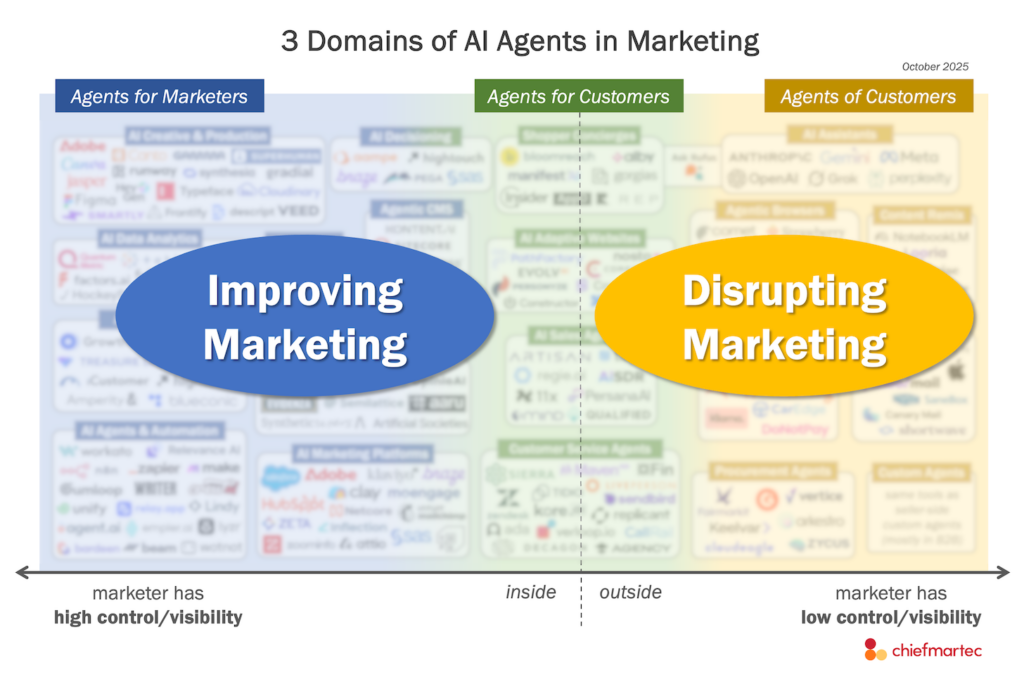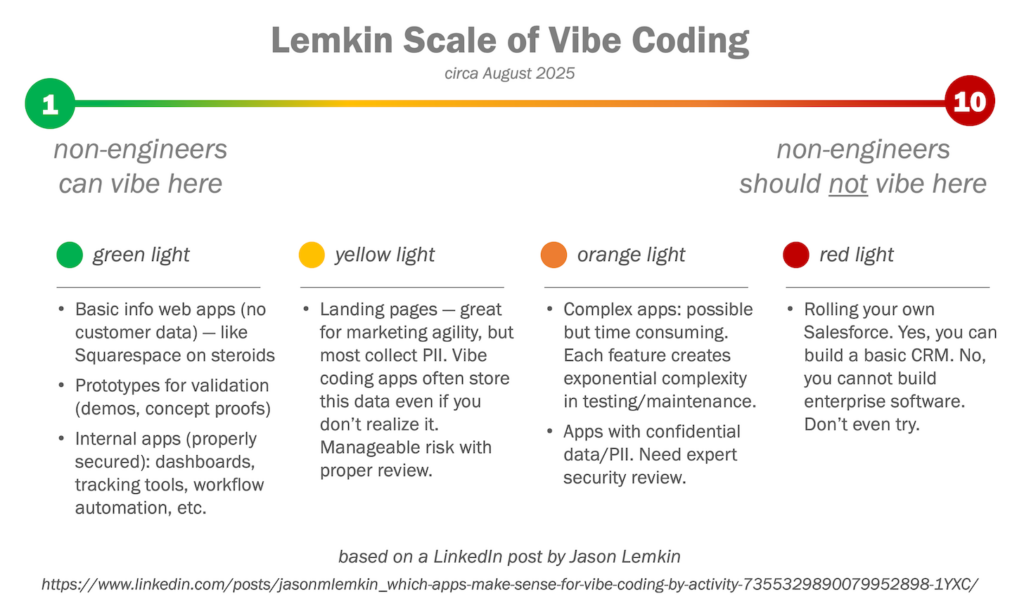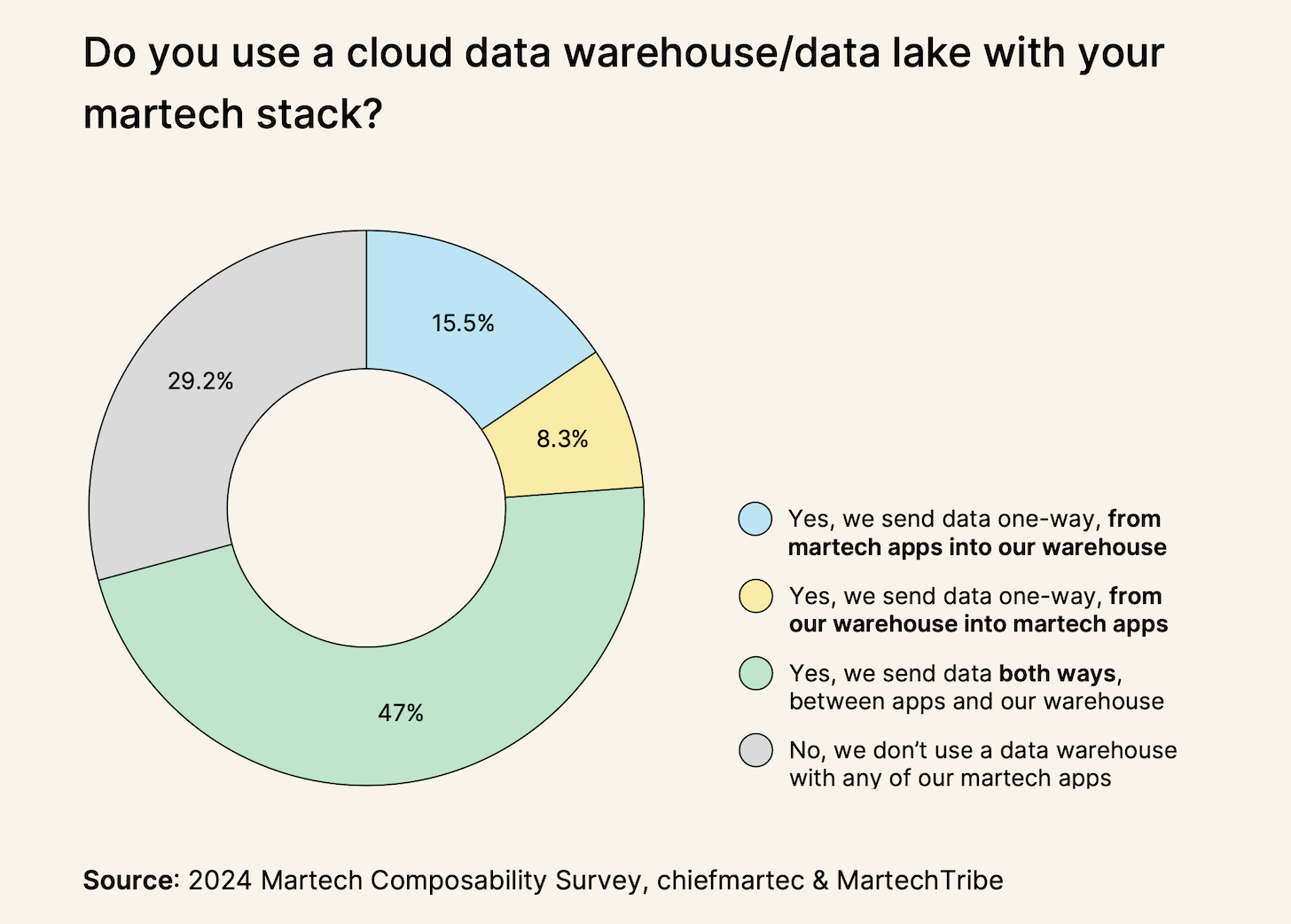
In our recent State of Martech 2024 report — which is free and now fully ungated — Frans Riemersma and I analyzed a ton of transformation happening across the martech industry, from the AI-powered explosion of the martech landscape to three counterintuitive truths of “composability” in martech stacks.
Two of our most important findings, however, were the prioritization and adoption of foundational capabilities that are necessary for marketing to harness the full power of AI:
- A unified data layer to comprehensively feed AI models across the stack.
- APIs across the stack to empower AI co-pilots and agents to take action.
Last month, I discussed why APIs are “very important” to martech buyers today, but they’ll be crucial for the coming wave of AI agents. The tl;dr takeaway: 84% of savvy martech and marketing ops buyers already consider APIs to be important or very important because 87% rely on them to automate marketing across their stack today. But now, such automation is swiftly being adapted to AI co-pilots and agents.
There’s a terrific article on how AI agents are disrupting automation from Insight Partners, which does a great job explaining the past, present, and future trajectory of automation architectures:
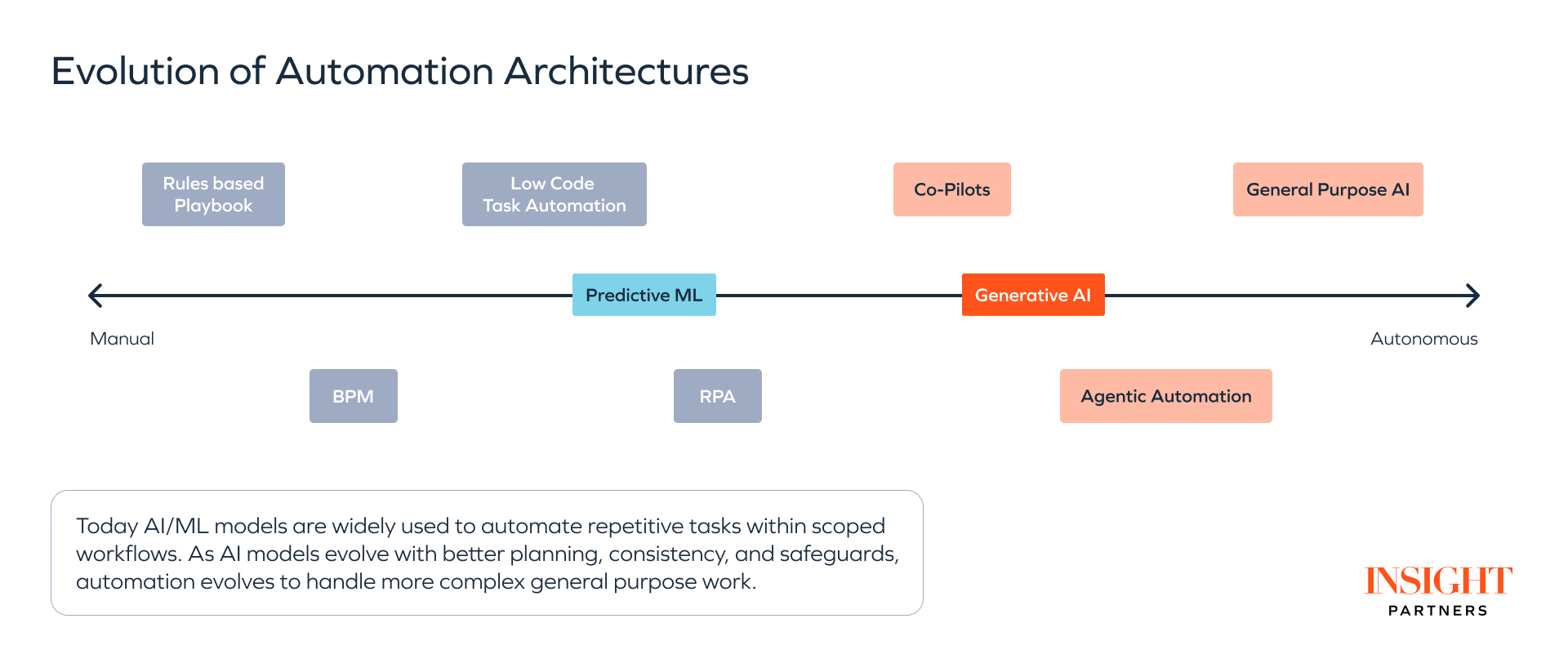
They also published a rather insightful (ha) AI automation market map in the article, which gives some sense of the different categories of technologies enabling this transformation:
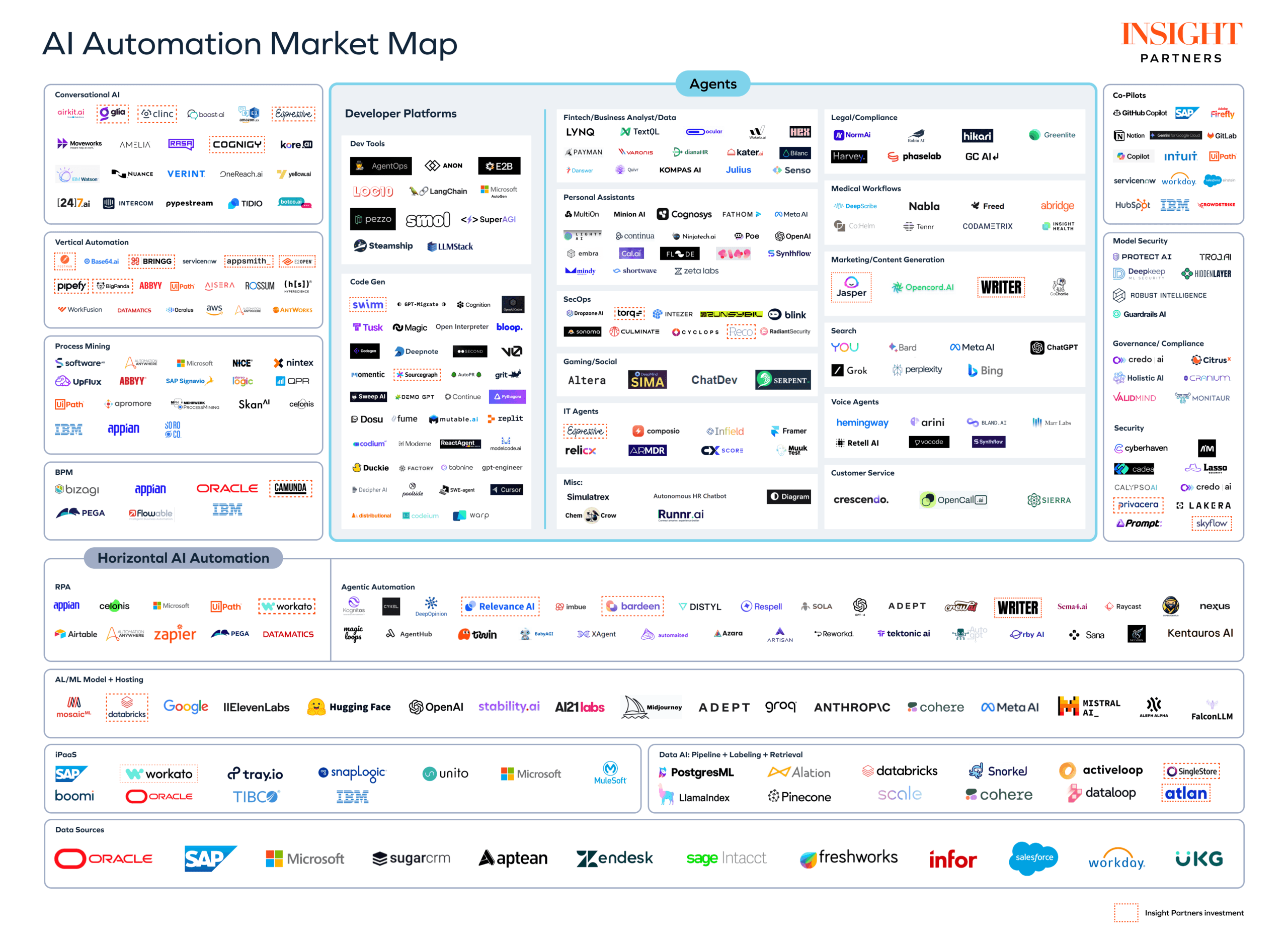
In this post, I want to focus on the foundational importance of a unified data layer for this next wave of AI innovation. While APIs enable agents to take action, data ensures that the AI models powering those agents have the right information to determine which actions to take. If we don’t have clean and complete data flowing to these models, they will literally lack the intelligence to make good decisions and deliver rational outcomes.
The good news is that martech has already been rapidly converging on a core unified data layer of cloud data warehouses (CDWs) — and data lake/lakehouse variations — such as Snowflake, Databricks, Google BigQuery, Amazon Redshift, etc.
Over the past three years, there’s been an accelerating adoption of martech apps both pushing their data into this layer and pulling data out to “activate” it. A new generation of warehouse-native martech, such as GrowthLoop, has also emerged that skips over all that pushing and pulling and works directly on top of the CDW.
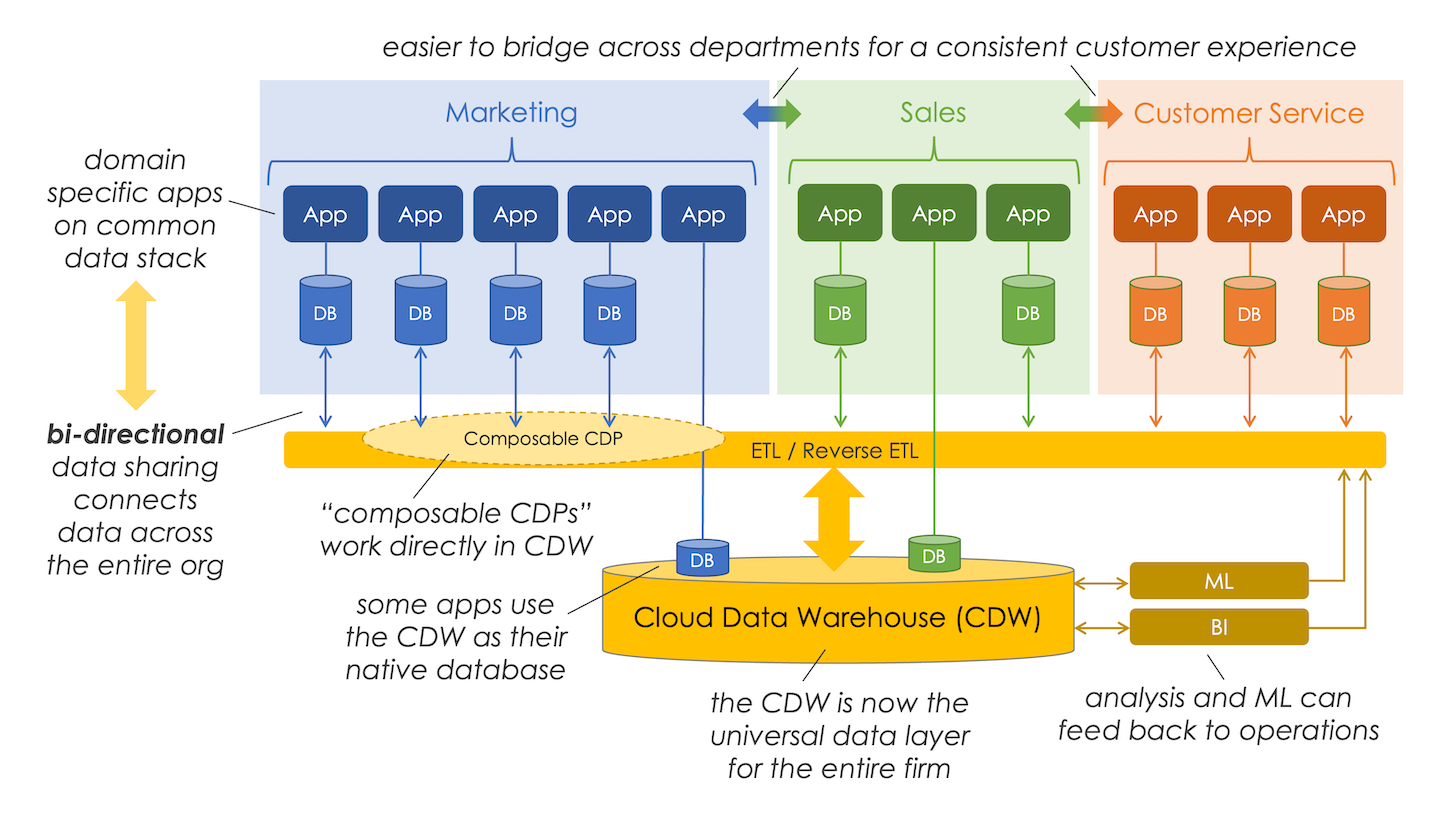
This architecture breaks us out of the hell of a hundred siloed app databases that has been the greatest pain point of our heterogeneous tech stacks for the past decade. All of the data across marketing — and other relevant departments, such as product, sales, and customer service — is gravitationally pooled in the warehouse/lakehouse, where it is then technically accessible to any app within your stack.
(I say “technically” because there’s still plenty of work to be done to organize and manage all this data, which is where much of the current frontier of data stack innovation is focused. Connection and centralization is the standardized foundation we have today. Cohesion and coordination is the next level of standardization in these archtiectures that needs to mature. It will.)
Our findings in the State of Martech 2024 confirms that this convergence is real. 71% of our respondents — leading martech and marketing operations professionals — reported that they’ve already integrated a data warehouse/data lake with their martech stack. The vast majority (69%) with those integrations have them working bi-directionally, sending data both ways between the warehouse/lake and their martech apps.
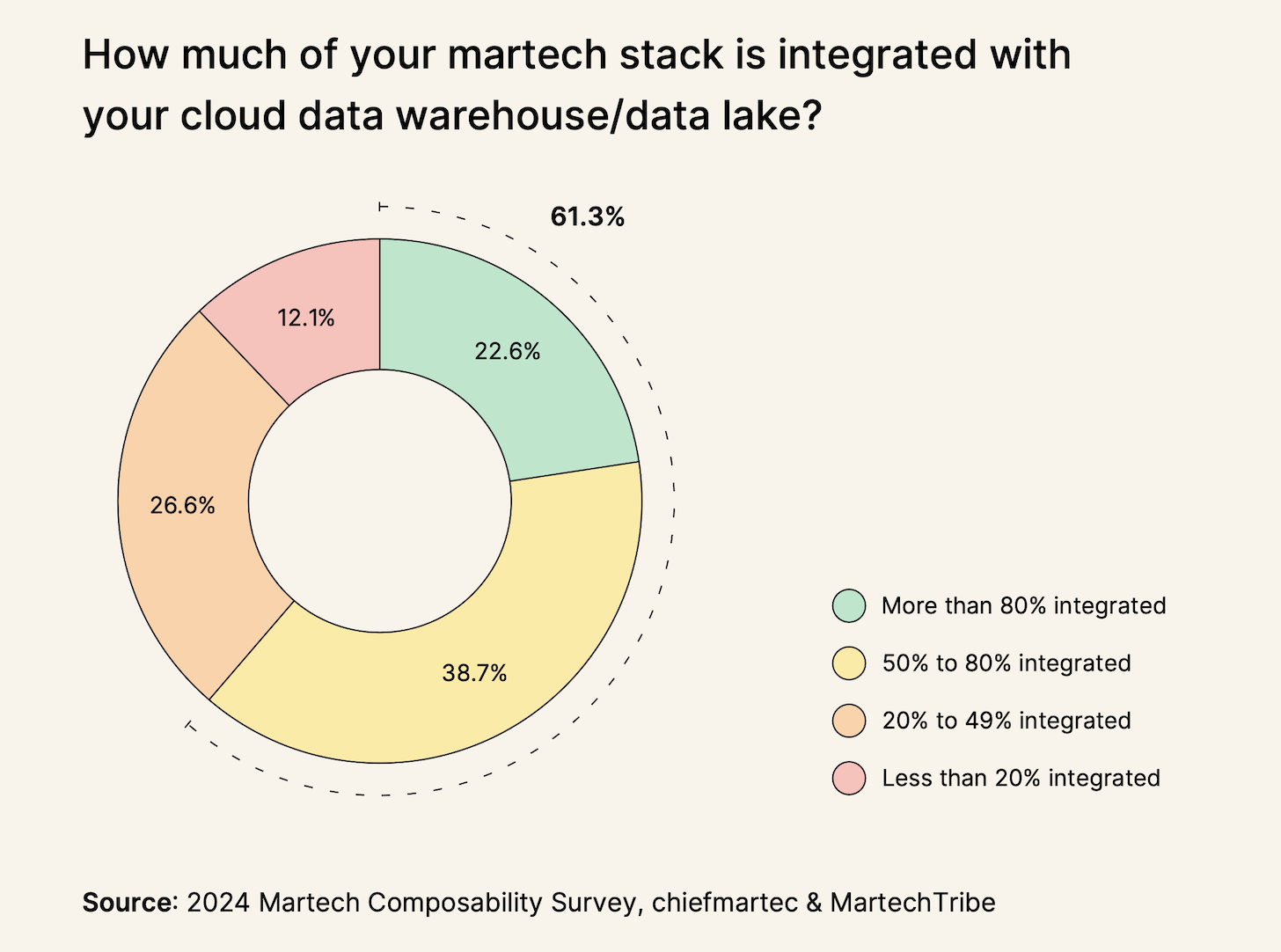
It’s also impressive that 61% of those with a data warehouse/data lake integrated into their martech stack reported that the majority of their martech stack has been integrated to this data layer.
We’re now seeing Snowflake and Databricks both acquire and advance a considerable amount of AI capabilities natively in their platforms. All the data flowing in from integrated martech stacks will be instantly able to take advantage of it.
The Databricks Marketplace and Snowflake Marketplace also offer hundreds of external industry data products for marketing and advertising that can be effortlessly combined with your internal data to enrich analyses, audiences, campaigns, and customer experiences.
This is aggregation at the data layer as I described it in 2021. It’s better than consolidation because the more data you aggregate, from any multitude of sources across your entire organization and beyond, the more value you can unlock.
This is the foundation upon which marketing AI will be built.
